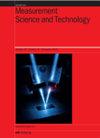Design and dynamic analysis of a highly sensitive MEMS gyroscope based on mode localization.
IF 3.4
3区 工程技术
Q1 ENGINEERING, MULTIDISCIPLINARY
引用次数: 0
Abstract
Micro-electromechanical systems (MEMS) gyroscope has important applications in many fields such as aviation, spaceflight, weaponry and automatic driving. To improve the robustness and sensitivity, we design a novel dual-mass MEMS gyroscope based on the mode localization in this paper. The gyroscope structure consists of a pair of perturbation systems connected with weakly coupled resonator systems (WCRS). It has the advantage of eliminating the mode matching and achieving the mode localization effect. The dynamic behaviors of MEMS gyroscope are developed by the multi-scale method. The detection characteristics of amplitude ratio (AR) and amplitude difference (AD) are compared. Combining numerical simulation, we analyzed the influence of critical parameter. It is indicated that the sensitivity can reach up to 56199.78 ppm/°/s through AR output, which is two magnitudes higher than the traditional MEMS gyroscope. For the detection of micro-angular rate, the AD output has advantages in sensitivity, and AR output has a smaller nonlinearity error. In addition, structural parameters, especially the voltage of perturbation parallel plate, have a significant impact on system sensitivity. If the breakdown voltage meets condition, the sensitivity can be enhanced more than ten times by amplifying the voltage, which further broaden the application field of the MEMS gyroscope.基于模式定位的高灵敏度 MEMS 陀螺仪的设计与动态分析
微机电系统(MEMS)陀螺仪在航空、航天、武器和自动驾驶等许多领域都有重要应用。为了提高陀螺仪的鲁棒性和灵敏度,我们在本文中设计了一种基于模式定位的新型双质量 MEMS 陀螺仪。该陀螺仪结构由一对与弱耦合谐振器系统(WCRS)相连的扰动系统组成。它具有消除模式匹配和实现模式定位效果的优点。采用多尺度方法研究了 MEMS 陀螺仪的动态行为。比较了振幅比(AR)和振幅差(AD)的检测特性。结合数值模拟,分析了关键参数的影响。结果表明,通过 AR 输出,灵敏度可达 56199.78 ppm/°/s,比传统的 MEMS 陀螺仪高出两个量级。对于微角速率的检测,AD 输出在灵敏度方面具有优势,而 AR 输出的非线性误差较小。此外,结构参数,尤其是扰动平行板的电压对系统灵敏度也有很大影响。如果击穿电压满足条件,通过放大电压可将灵敏度提高十倍以上,从而进一步拓宽 MEMS 陀螺仪的应用领域。
本文章由计算机程序翻译,如有差异,请以英文原文为准。
求助全文
约1分钟内获得全文
求助全文
来源期刊

Measurement Science and Technology
工程技术-工程:综合
CiteScore
4.30
自引率
16.70%
发文量
656
审稿时长
4.9 months
期刊介绍:
Measurement Science and Technology publishes articles on new measurement techniques and associated instrumentation. Papers that describe experiments must represent an advance in measurement science or measurement technique rather than the application of established experimental technique. Bearing in mind the multidisciplinary nature of the journal, authors must provide an introduction to their work that makes clear the novelty, significance, broader relevance of their work in a measurement context and relevance to the readership of Measurement Science and Technology. All submitted articles should contain consideration of the uncertainty, precision and/or accuracy of the measurements presented.
Subject coverage includes the theory, practice and application of measurement in physics, chemistry, engineering and the environmental and life sciences from inception to commercial exploitation. Publications in the journal should emphasize the novelty of reported methods, characterize them and demonstrate their performance using examples or applications.
 求助内容:
求助内容: 应助结果提醒方式:
应助结果提醒方式:


